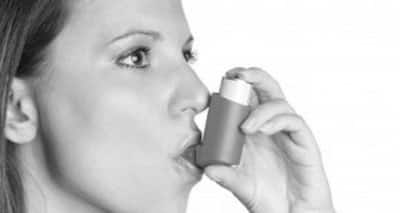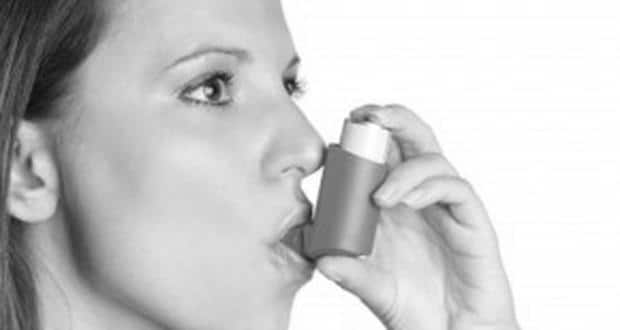Don’t Miss Out on the Latest Updates.
Subscribe to Our Newsletter Today!
Diagnosis and treatment of asthma

 What are the tests available for Asthma? How can Asthma be diagnosed?
What are the tests available for Asthma? How can Asthma be diagnosed?
Asthma is diagnosed based on the patient's medical history, physical examination and laboratory test results. Your doctor will take a detailed medical history and ask you about your asthma symptoms and allergy triggers. Your doctor may use one or more of the following asthma tests to diagnose asthma, to assess your breathing and to monitor the effectiveness of asthma treatment:
- Blood and Sputum analysis show an increase in the number of eosinophils. The level of a certain antibodies can be elevated.
- Chest X-ray - may show abnormality in the airway.
- Arterial blood gas analysis - shows decreased oxygen concentration in blood.
- Lung function testing () - The two most common pulmonary function tests for asthma are spirometry and methacholine challenge tests
- Spirometry - helpful in judging severity of airway obstruction. It measures how much air you can breathe in and out and how fast you can blow air out. Some of the common values looked at are:
a. Forced Vital Capacity or FVC - total volume of air one can exhale after maximum breathing in
Also Read
b. Forced Expiratory Volume in One Second, or FEV1- measures the volume of air one can exhale in the first second.
- Methacholine challenge test - commonly used in adults. Performed when your symptoms and spirometry do not convincingly diagnose asthma. Methacholine is an agent that, when inhaled, causes the airways to spasm (contract involuntarily) and narrow if asthma is present
- Allergy test- to identify any allergies that trigger asthma symptoms. Skin tests and blood tests help in detecting allergens.
How can my Asthma be treated? What is the treatment for Status Asthmaticus?
The aim of asthma treatment is to avoid the substances that trigger your symptoms and control airway inflammation. There are two basic kinds of medication for treating asthma:
- CONTROL DRUGS - to prevent attacks. They control your symptoms. You must take them every day for them to work. They are administered orally or by inhalation. The most common and effective way to deliver asthma drugs to the lungs are asthma Inhalers. Metered-dose inhalers (MDI) and dry powder inhaler (Rotacaps) are the most widely used method. Have a warm drink or water after using MDI to get rid of unpleasant aftertaste of the medicine. Combination asthma inhalers contain two different medications: an inhaled steroid and a long-acting bronchodilator. They are popular due to their convenience. The medications last for at least 12 hours. If it is difficult to use small inhalers, your doctor may prescribe an asthma nebulizer, a breathing machine. The nebulizer changes asthma medications from a liquid to a mist which is more easily inhaled into the lungs. The asthma nebulizer with a mask is typically used for infants, small children and elderly adults.
- Steroids and Other Anti-Inflammatory Drugs: the most important treatment for most people with asthma, particularly the inhaled steroids. They prevent asthma attacks by reducing swelling and mucus production in the airways which cause the airways to be less sensitive and less likely to react to asthma triggers.E.g. Asmanex, Alvesco, Qvar AeroBid, Flovent, Pulmicort.For severe asthma (status asthmaticus), injections of drugs such as epinephrine and prednisone are often necessary. . Prednisone is the most potent and effective anti-inflammatory asthma medication available.
- Long-acting bronchodilators - often combined with inhaled steroids for long-term control of asthma symptoms or when you have asthma symptoms daily despite treatment with a daily inhaled steroid alone. Long-acting bronchodilators are never used alone for long-term therapy.
- Other control drugs that may be used are Leukotriene inhibitors (such as Singulair and Accolate), Cromolyn sodium (Intal) or nedocromil sodium (Tilade), Omalizumab (Xolair), Aminophylline or theophylline (rarely used anymore).
2. QUICK-RELIEF DRUGS - for use during attacks.
- Short-acting bronchodilator inhalers are used to quickly relieve the cough, wheeze, chest tightness, and shortness of breath caused by asthma Bronchodilators relieve the symptoms of asthma by dilating or widen the bronchial tubes. They should not be used daily in the treatment of asthma. The most commonly used short-acting bronchodilator is albuterol.
A severe asthma attack (status asthmaticus) may not respond quickly to routine treatment with asthma inhalers.
- Continuous use of an asthma nebulizer and injections of drugs such as epinephrine and prednisone for asthma are often necessary.
- Other therapies may include terbutaline injections, magnesium sulfate (induces smooth muscle relaxation of the airways) and leukotriene inhibitors, which are anti-inflammatory drugs.
- During a severe asthma attack that does not respond to asthma drugs, a mechanical ventilator may be needed to assist the lungs and respiratory muscles. A facemask is applied or a breathing tube is inserted in the nose or mouth for this asthma treatment. These breathing aids are temporary and are removed once the attack has subsided and the lungs have recovered sufficiently to resume the work of breathing on their own.
- A short hospital stay in an intensive care unit may be necessary with an acute attack.
Please do note that all of the above mentioned drugs require a prescription from your asthma doctor.
What are the alternative treatments for Asthma?
HOMEOPATHY
Homeopathy aims at strengthening your immune system so that gradually you will need decreased asthma medication and eventually you may not need any.Some of the popular remedies are:
- Pulsetila: for spasmodic symptoms. Anxiety, sudden wheezing, difficulty breathing and a feeling of suffocation, which worsens if you move.
- Ipecanum: for chronic asthma. It is used if you are older and the attacks occur during midnight, when you are awakened with soreness and pain in the chest and heat in the head which improves with warmth. Especially useful if you are anaemic.
- Antimonium tartaricum: presence of fine rattling or crackling sounds in the chest. Difficulty breathing and feeling of suffocation. Suitable for young children and the elderly.
- Natrum mur: for general symptoms including a worsening of asthma on exposure to mold and dampness. Wheezing and breathing difficulties aggravated by exertion. Loose bowels after each attack.
- Spongia tosta: for a barking cough and little mucus during an asthma attack.
- Pulsatilla: if wheezing starts after eating rich food or you get too warm. Tightness in the chest which worsens during the evening and at night. Relieved by fresh, cool air. Coughing brings up yellow-coloured mucus.
- Carbo vegitable: helpful in a tense, constricted feeling in the lower part of the chest, with pressure in the stomach. Asthma attack brought about by gastric disturbances. Overindulgence in sweets, spicy food, stimulants and alcohol.
AYURVEDA
Some of the natural herbs used to cure asthma are Mullein, licorice, turmeric, thyme, black pepper, flax seed, antalkali ginger, clove, manna and myrrh. Massaging mustard oil with camphor over the chest loosens the mucus and helps in easy breathing during asthma attack. Inhaling steam with a few caraway seeds added to boiling water helps in dilation of bronchial passage. Honey is one of the most effective remedies used for treatment of asthma A few common medicines as suggested in Ayurveda are:
- A paste of Nagar and Bharangi in water
- Mixture of Shukti Bhasma, Trikuti Churna and Vasa Churna taken with honey
- Sitopaladi choorna
- Vasavleha
- Swaskuthar ras
- Panchakarma - before the onset of monsoon
- Rasayana Chikitsa - during asthma attacks
- Kantakari Avalehya (semi solid preparation)
- Vasa Avalehya (semi solid preparation)
- Shitopaladi churnam (powdered preparation)
- Kanakasava (the fermented preparation)
- Agatsyaharitaki
Read more about causes, symptoms, diagnosis and treatment of asthma.
You may also like to read:
- 8 steps to manage asthma in children better (Gallery)
- Asthma: All you need to know
- 10 asthma triggers you should avoid
- World Asthma Day 2013: 10 facts about asthma you should know
- Are you being overmedicated for asthma?
- Could your child's cough be a symptom of asthma?
- Natural remedies to relieve your child of the discomfort of asthma.
- All about asthma medication and treatment
For more articles on asthma, check out our asthma section. Follow us on Facebook and Twitter for all the latest updates! For daily free health tips, sign up for our newsletter. And to join discussions on health topics of your choice, visit our forum.


